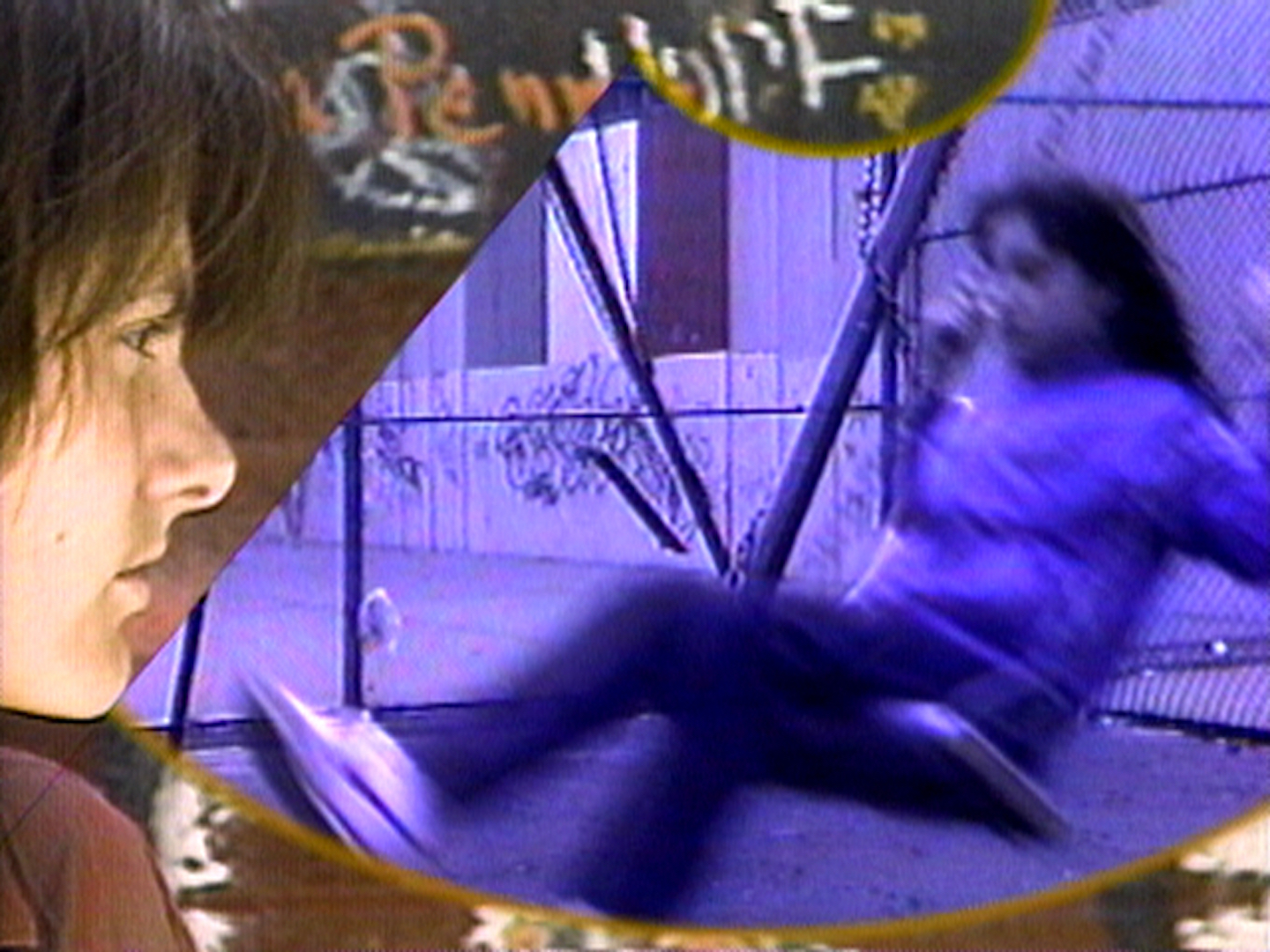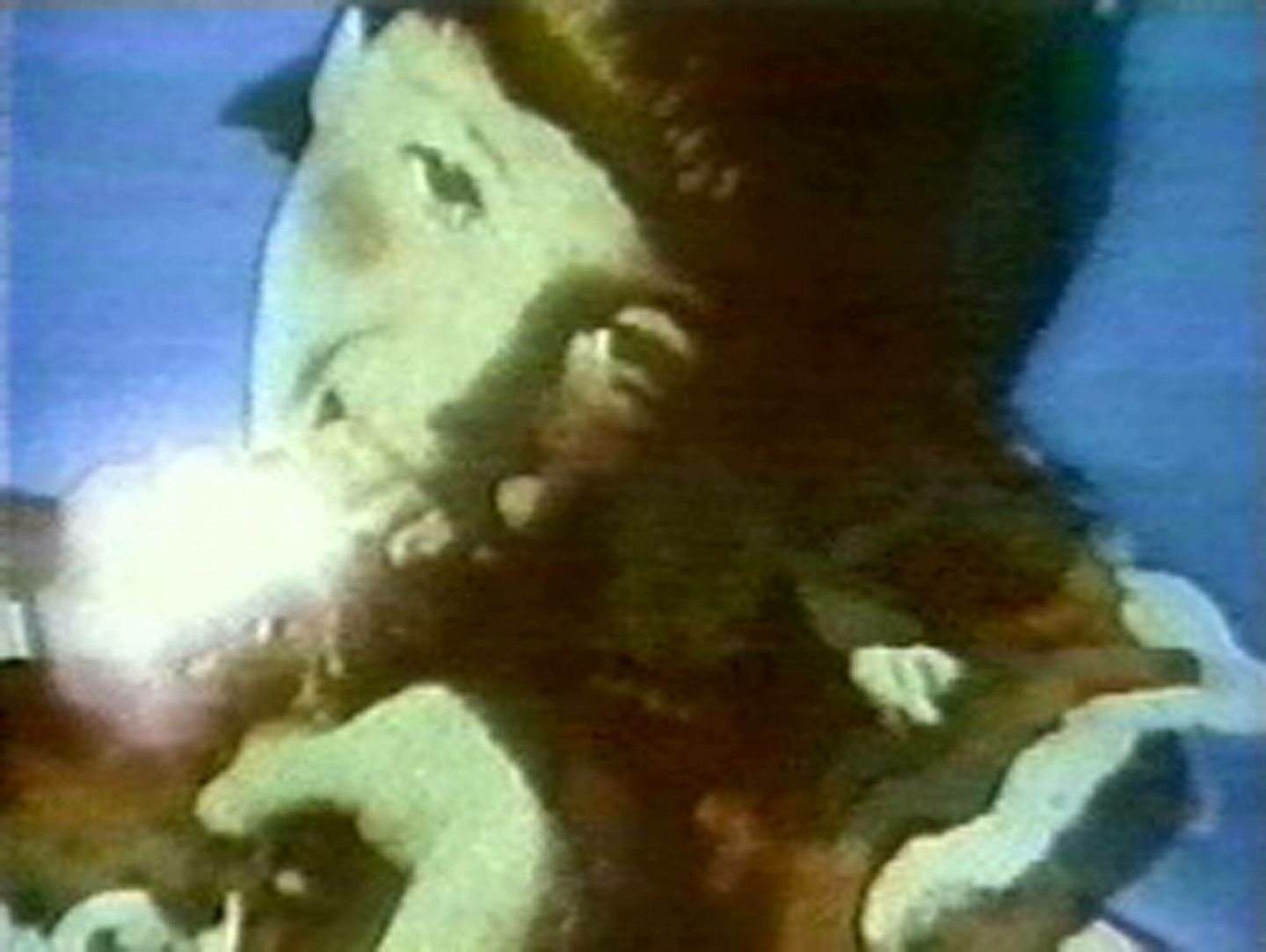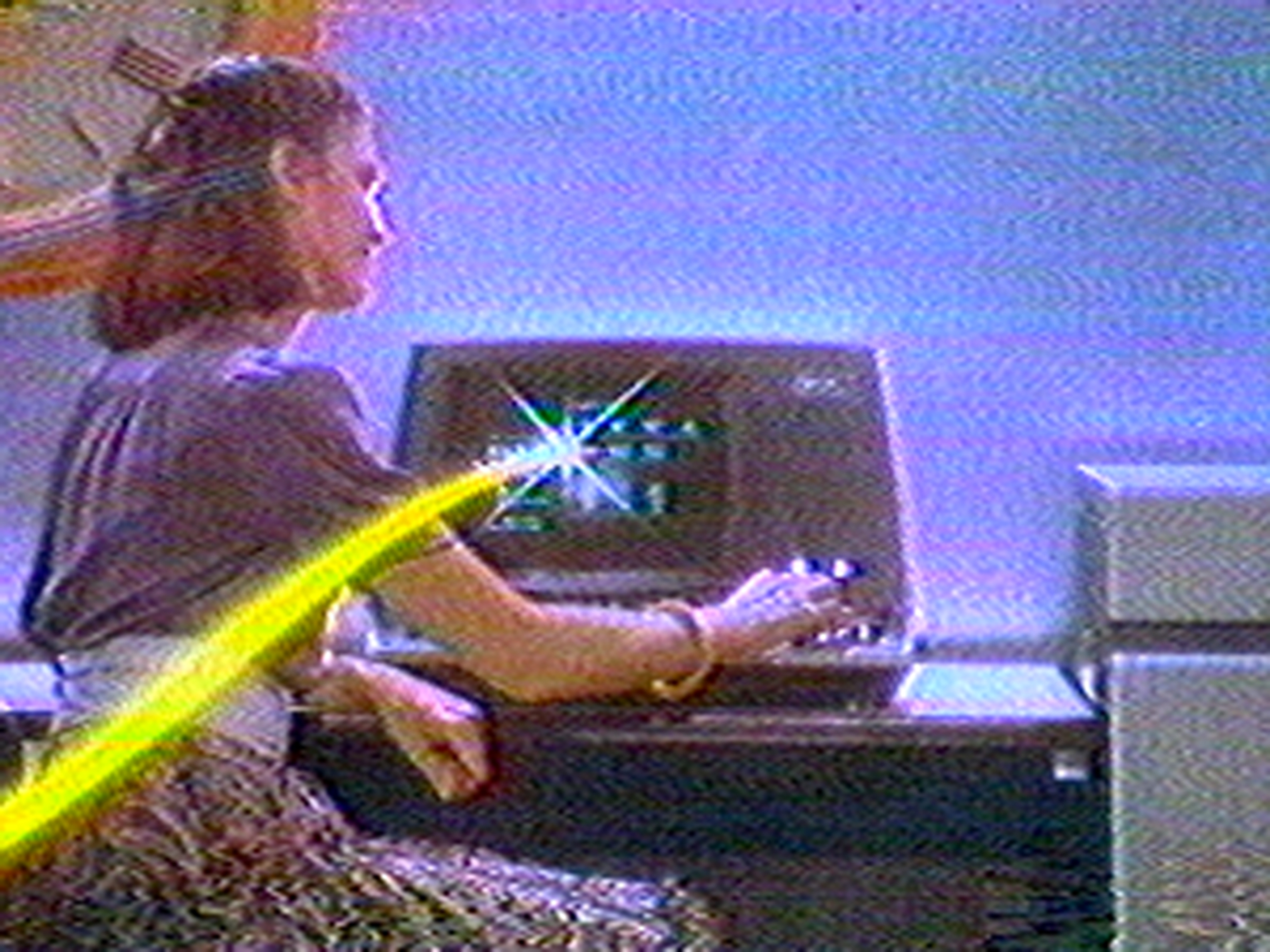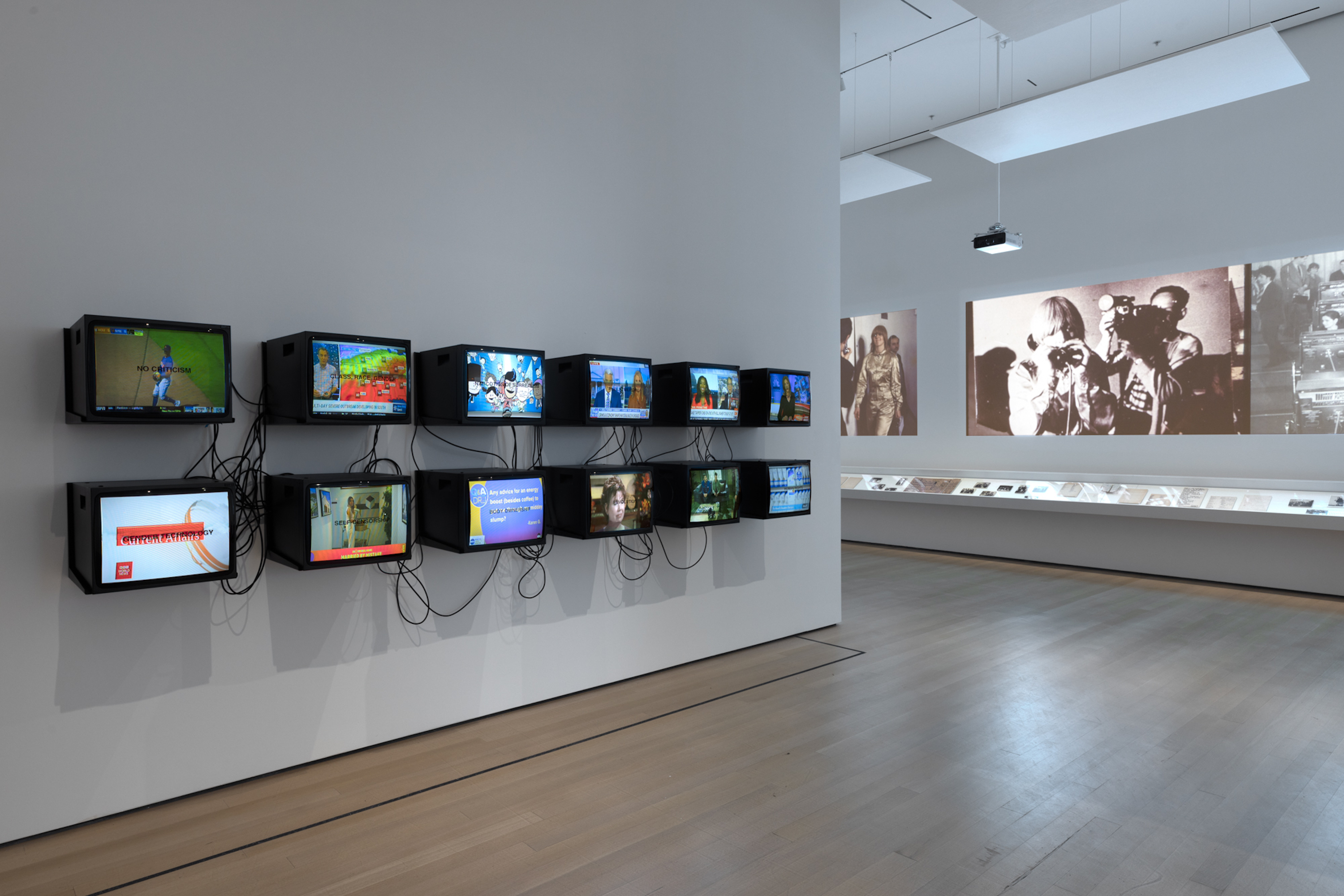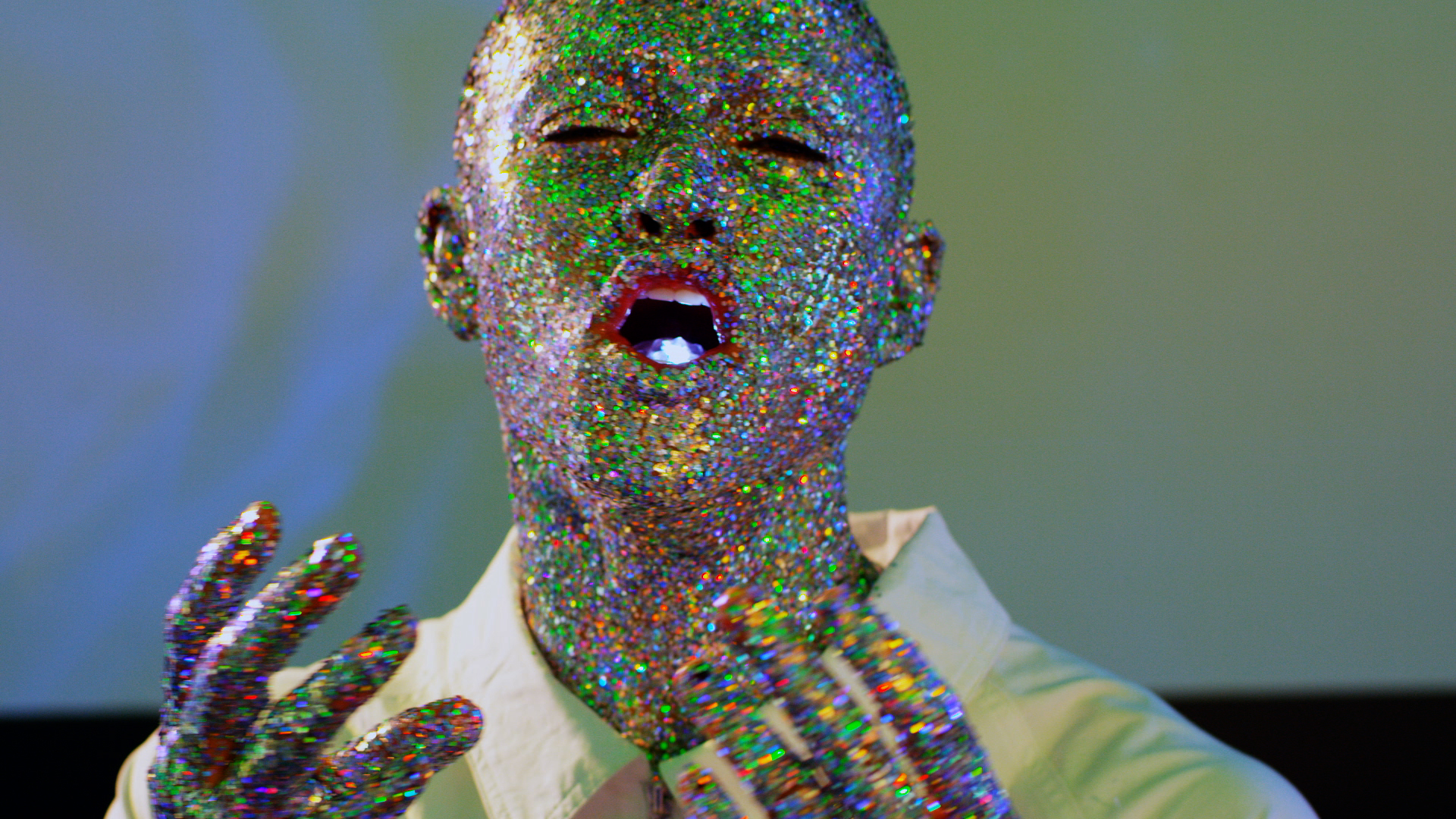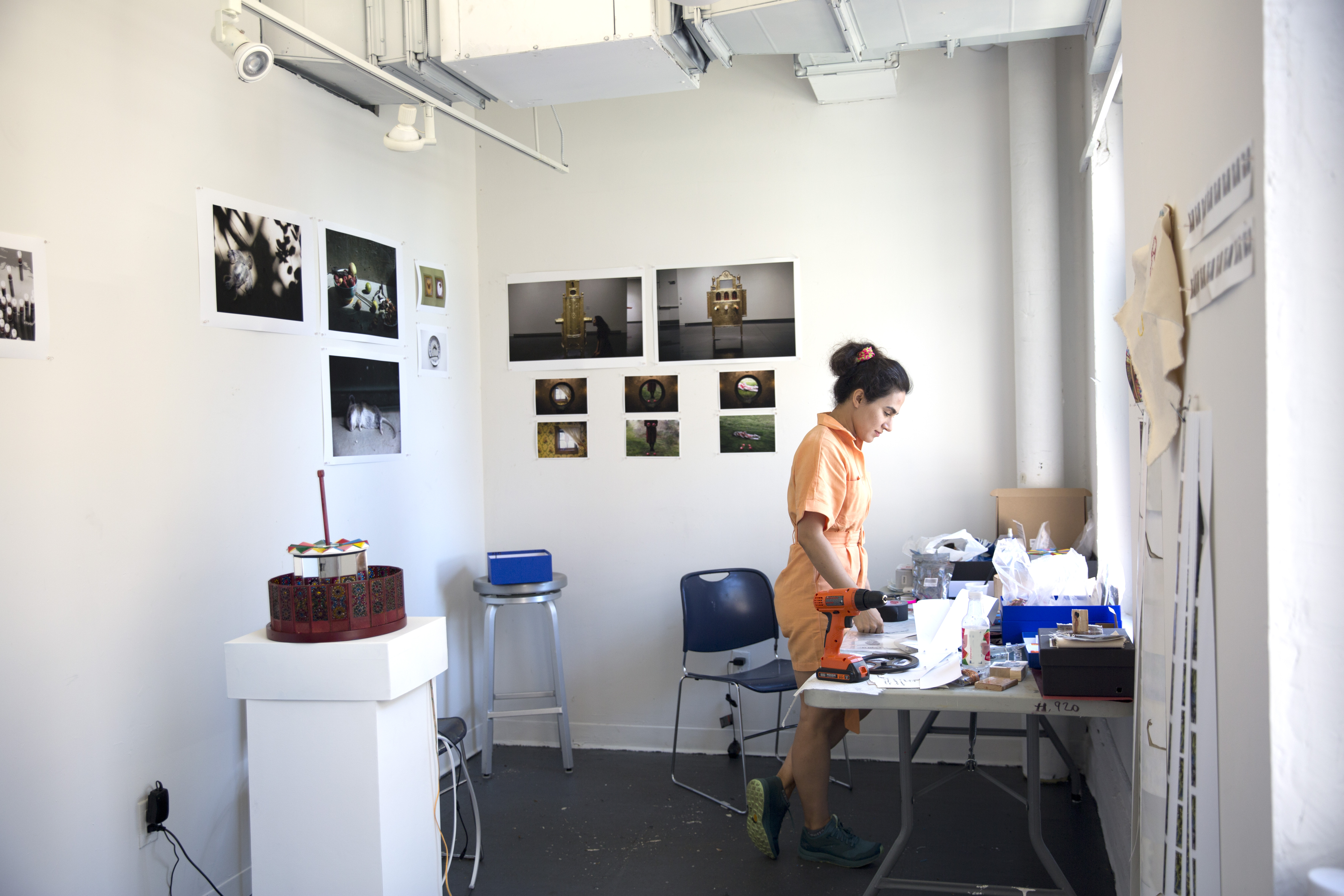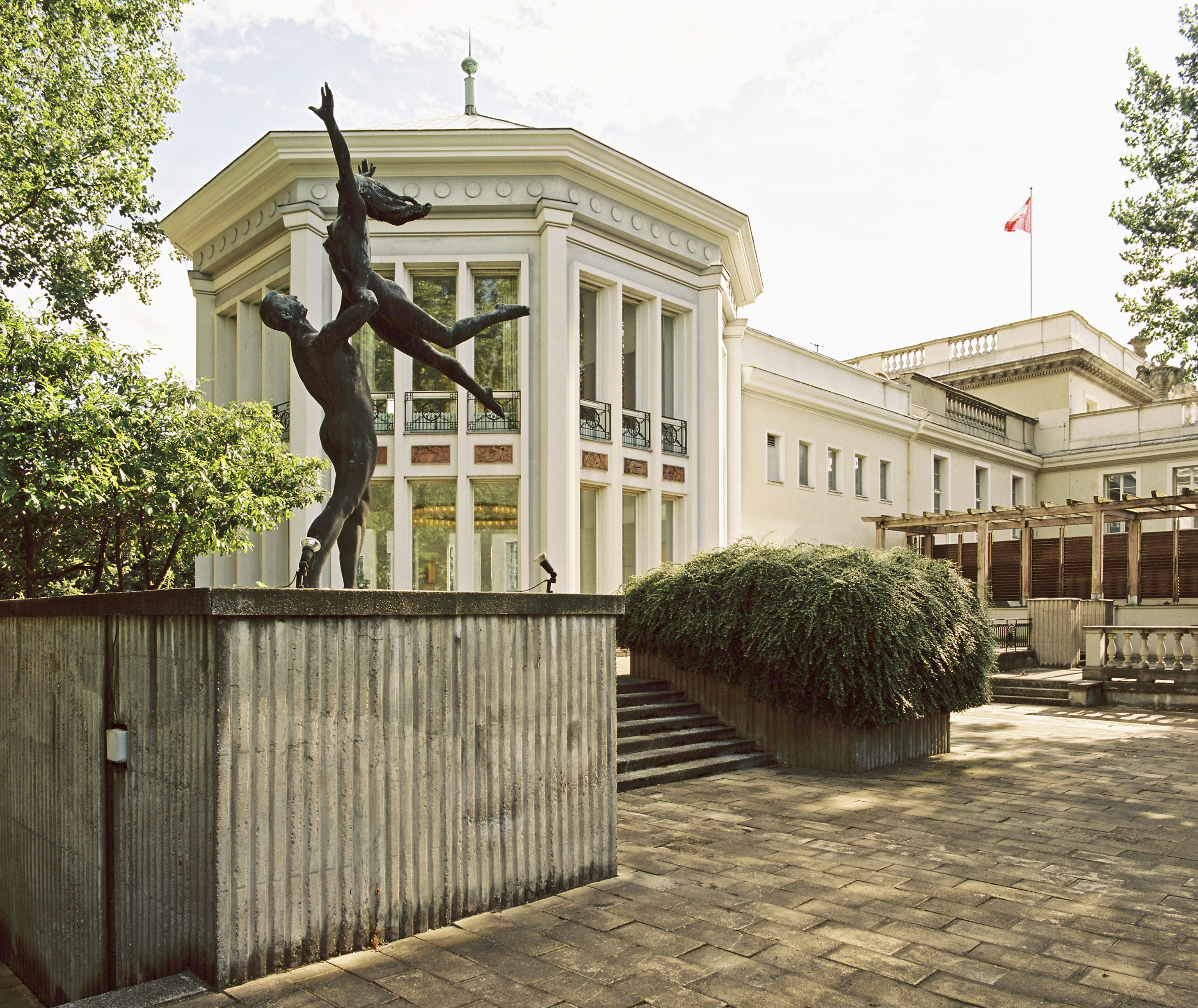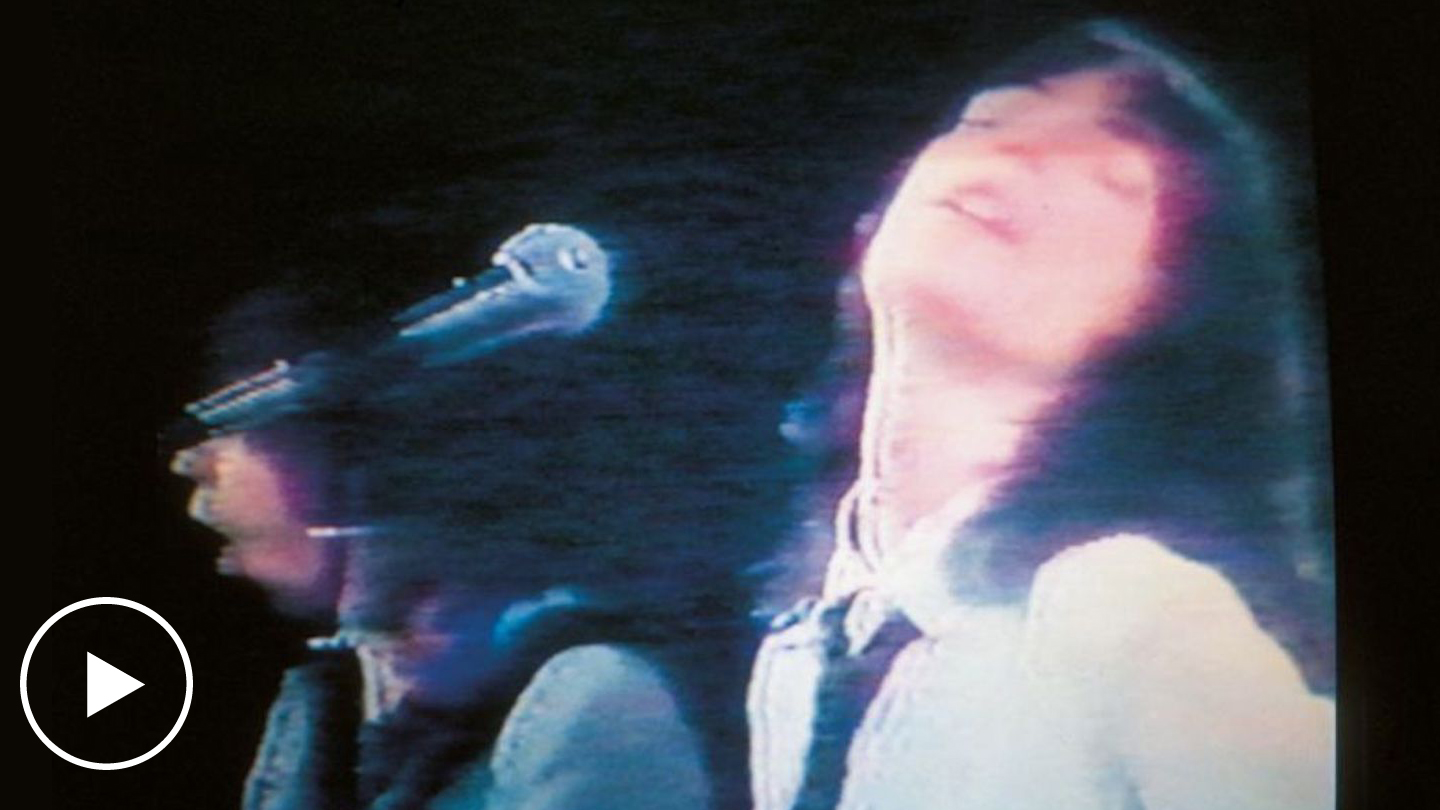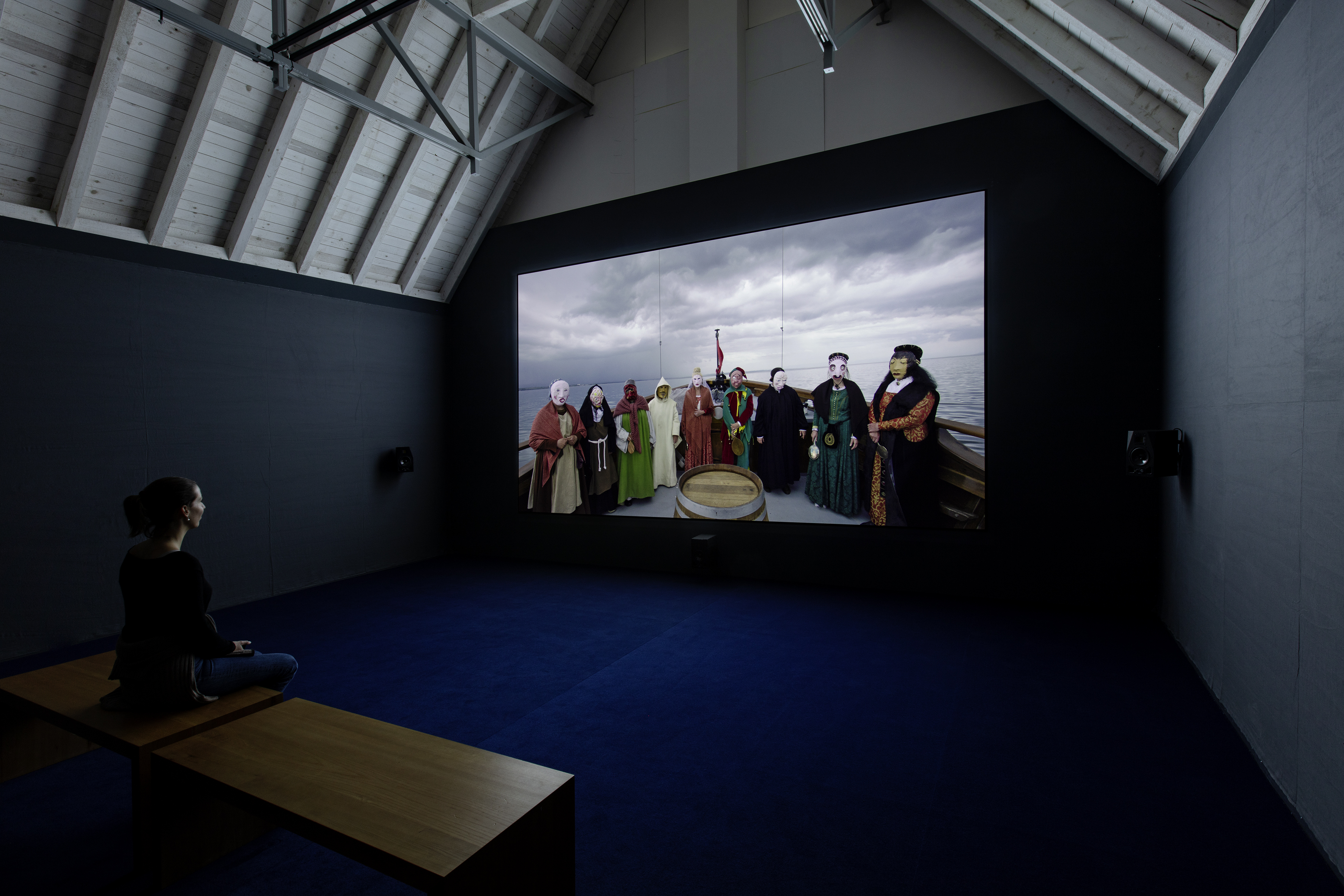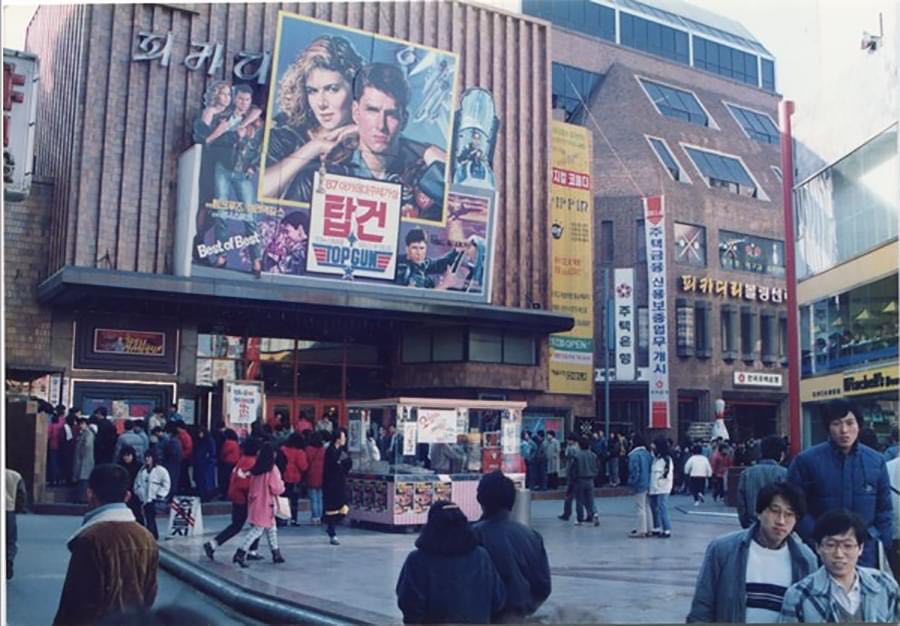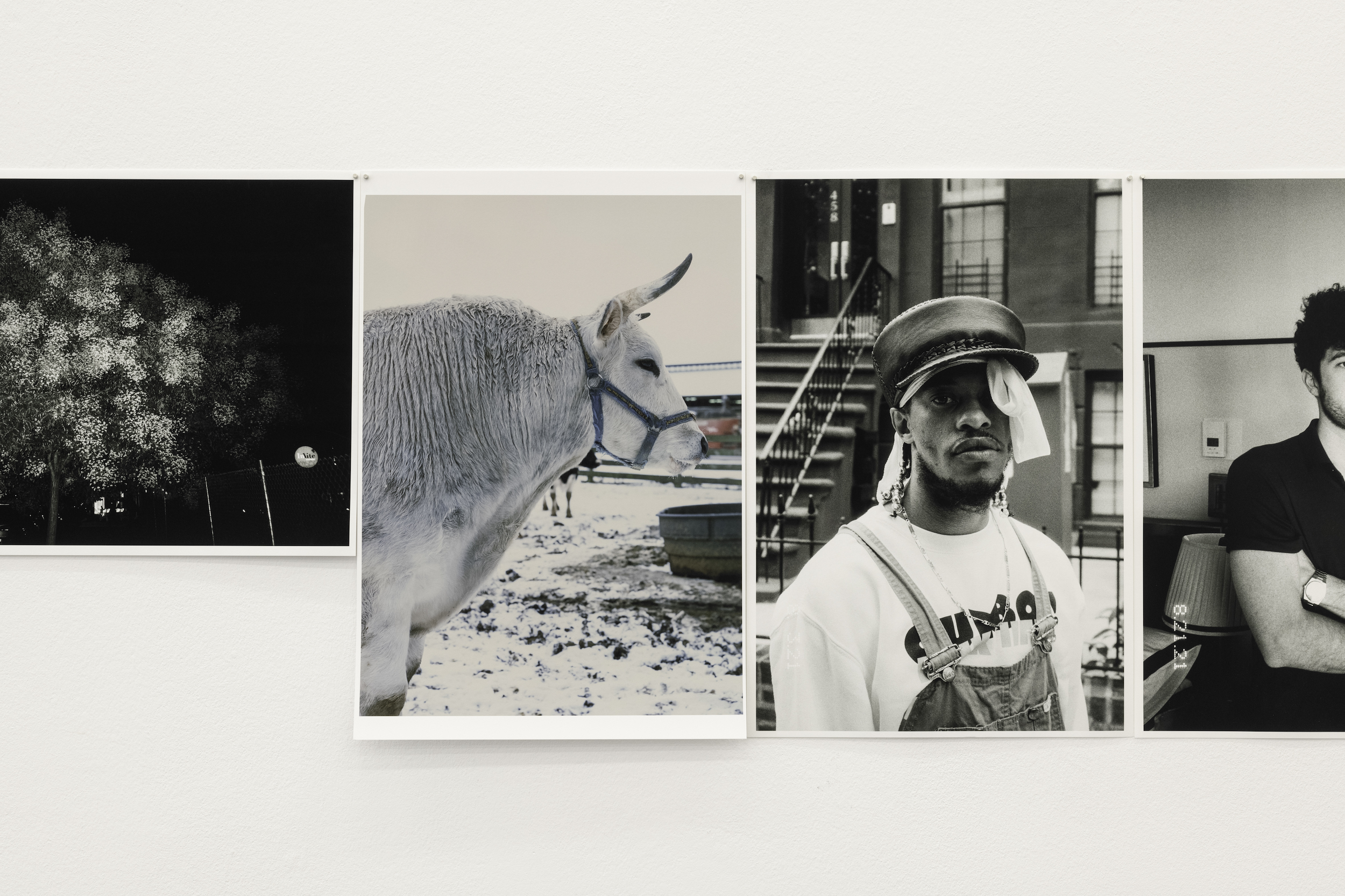Dara Birnbaum, Selected Video Works
March 28, 2019, 9pm
Brooklyn 11238
USA
Bar Laika is very pleased to present an evening with Dara Birnbaum, featuring a screening of selected video works and Q&A with the artist.
New Music Shorts, 1981, 5:41 minutes
The two short pieces that constitute New Music Shorts emerged from Birnbaum's engagement with the downtown New York music scene of the early 1980s. Birnbaum made New Music Shorts in 1981, the same year that MTV exploded onto television. During this time, music videos were also being screened in downtown clubs. These dynamic clips, created with analogue video technologies, are multi-image documents of early live performances by musicians Radio Fire Fight and Glenn Branca. Live footage is montaged with frame-in-frame compositions of the performers and the audience. The raw intensity of the music, together with Birnbaum's up-close, low-tech visuals, makes for a vivid snapshot of the Lower Manhattan post-punk scene.
Damnation of Faust Trilogy, 1983-87, 22:18 minutes
Using Goethe's Faust as a touchstone, Damnation of Faust is a trilogy of highly structured and composed video works evoking a free-floating, non-linear dream or memory. The broad themes of the work are conflicting forms of societal restraint and the struggles to define and express personal identity.
In Evocation, Birnbaum transforms the Faustian myth into a dreamlike introspection on the duality of the internalized self and the external world. A playground scene, shot in the streets of lower Manhattan, is the work's literal evocation. An underlying tension is derived from a longing for innocence and renewal, a desire to transcend everyday experience, which is evoked through the awakening of a young woman's lost childhood. Birnbaum brings her architectural background to the piece, using 19th-century Japanese ukiyo-e forms, fans and vertical pillars as visual motifs that plunge the viewer into the picture frame; scenes unfold and glimpses of meaning are revealed like a fan being opened. As much as the fan reveals, it also conceals — a key to the tape's very duality. Birnbaum uses video technology as an expressive pictorial language; multiple frames and images articulate the conjoinment of inner psychological space and external space, past and present, memory and reality. The three-part original score — dub music, haunting incantations and jubilant synth-pop — mirrors the protagonist's trajectory from confinement to transcendence.
In Will-o'-the-Wisp (A Deceitful Goal), a woman gazing through a window, reflecting on a romantic loss and betrayal, gives voice to Marguerite, the female character from the Faust legend. Will-o'-the-Wisp, the second part of Birnbaum's trilogy, is an eloquent reverie on memory and reality. A woven construct of deception and abandonment is created from the heroine's monologue, which alludes to the absent male, and the haunting fragmentation of visuals and sound. Using sophisticated electronic technology as a poetic language, Birnbaum creates elegant formal devices inspired by 19th-century Japanese visual motifs, including "diagonal rain wipes" and "transitional fan wipes." Internal (psychological) and external (real) worlds are lyrically conjoined. The woman gazes from her window while the object of her gaze — children on the street below — appears simultaneously in "window" inserts. The layers of illusions become poignant visual metaphors, as the woman's gaze is directed both inward and outward, onto memory and reality, past and present.
In Charming Landscape, Birnbaum shifts her focus from the individual to the social being, as she examines the collusion of personal history and collective memory through technology and mediated images. The demolition of a lower Manhattan playground is juxtaposed with images of two teenage girls reflecting on their pasts. Birnbaum then constructs an historical timeline of mass street demonstrations as chronicled in "found" television news footage, from the American Civil Rights Movement and anti-war protests of the 1960s to student uprisings in China in the 1980s. From playground to military police, across cultures and time, Birnbaum isolates the smallest and grandest of gestures, linking and questioning their meaning as signs of communication and dominance. Ending with a dedication to "Georgeann and Pam, who were born in 1968," this is a potent statement on the power of mass media to redefine history and memory, and the struggle of the individual voice to become a political voice.
Mirroring, 1975, 6:01 minutes
In this early work, Birnbaum investigates the notion of video as a mirror to create a psychological self-portrait. Devising a simple but ingenious formal exercise, she layers real and reflected images to articulate metaphorically the duality of internal and external selves. The work is part of the performance-based series Six Movements, in which the artist explores a woman's psychological states through physical gestures that are raw, direct, and unmediated. The young Birnbaum appears on camera, alone, as the performer. (By the late 1970s she would no longer appear on-screen, although she would often employ female figures as surrogates.)
Dara Birnbaum (b. 1946) is a pioneering American video and installation artist whose various critiques and transformations of the moving image have inspired artists internationally. An architect and painter by training, Birnbaum entered the nascent field of video art in the mid-to-late 1970s challenging the gendered biases of the period and television’s ever-growing presence within the American household. Her work primarily addresses ideological and aesthetic features of mass media, involving the re-manipulatiion of television's idiomatic grammar and various genres, and enacting a complex and critical engagement with the medium's representation of political events and the public’s reception of history. Her techniques often merge low- and high-end technologies and draw on her background in architecture and painting to invent new pictorial devices. External and psychological reality, past and present, are conjoined through visual motifs such as reframed and layered images, dramatic wipes, and box inserts that function as windows onto other realities. She has described her works as new “ready-mades” that “manipulate a medium which is itself highly manipulative.” Birnbaum is also well known for forming part of the feminist art movement that emerged within video art in the mid-1970s. Today she has a global presence and is widely celebrated for her influential and powerful artworks.
Birnbaum received a Bachelor of Architecture degree from Carnegie Mellon University, Pittsburg, a B.F.A. in Painting from San Francisco Art Institute, and a Certificate in Video and Electronic Editing from the Video Study Center at the New School for Social Research, New York. Since her first solo exhibition in New York at Artists Space in 1977, Birnbaum has shown in numerous renowned international museums, such as MoMA (Museum of Modern Art), New York; Stedelijk Museum, Amsterdam; mumok (museum moderner kunst stiftung ludwig wien), and Kunthalle Wien, both Vienna; IVAM (Institut Valencià d’Art Modern), Valencia; MACBA (Museu d’Art Contemporani de Barcelona), Barcelona; and Moderna Museet, Stockholm. In 2009 the major retrospective exhibition Dara Birnbaum: The Dark Matter of Media Light was mounted at S.M.A.K. (Stedelijk Museum voor Actuele Kunst), Ghent, Belgium, which also traveled to the Museu de Arte Contemporânea de Serralves, Porto, Portugal. She has been featured in two Venice Biennales, in 2003 and 2015; and in three Documenta exhibitions in Kassel, Germany, in 1982, 1987, and 1992. Distinguished awards include a United States Artists Fellowship; Rockefeller Belllagio Residency; the TV Picture Prize, International Festival of Video and Electronic Arts in Locarno, Switzerland; Certificate in Recognition of Service and Contribution to the Arts, Harvard University; and the American Film Institute's Maya Deren Award for Independent Film and Video Artists. Her work is held in the permanent collections of the Whitney Museum of American Art, New York; SFMOMA (San Francisco Museum of Modern Art), San Francisco; MoMA, New York; Stedelijk Museum, Amsterdam; MACBA, Barcelona; Castello di Rivoli, Turin; Museo Reina Sofia Reina, Madrid; and Tate Modern, London, among many others. Her new commission The Soul Train opens at Memorial Art Gallery, Rochester in April this year.
She lives and works in New York.
For more information, contact laika@e-flux.com.
